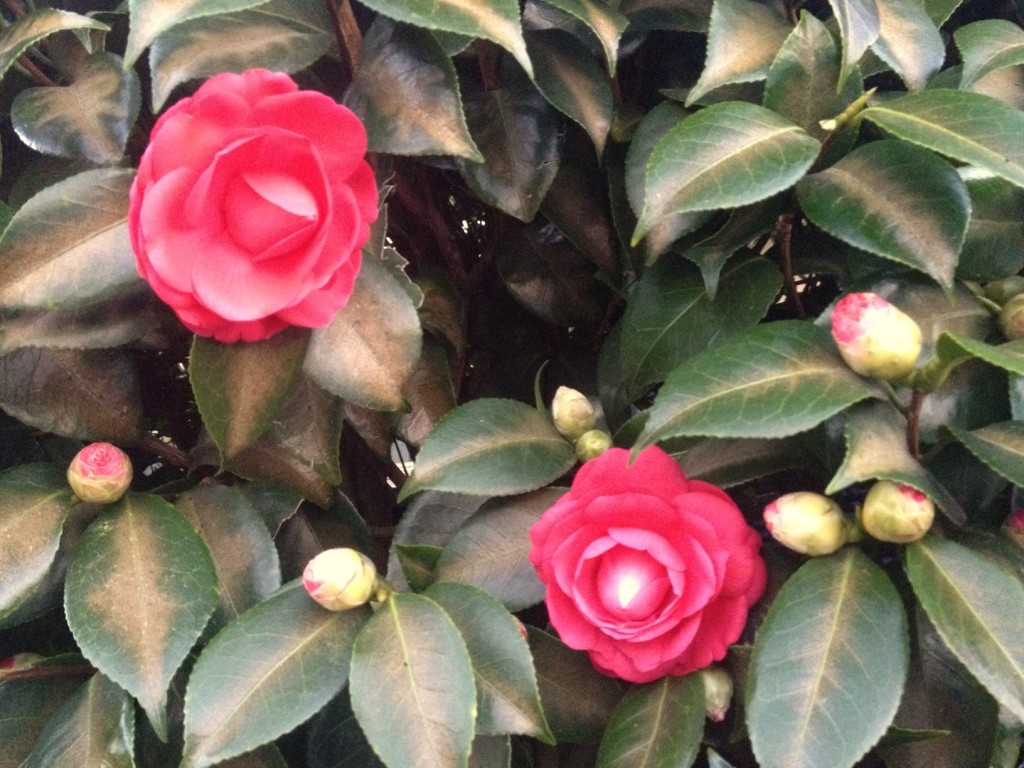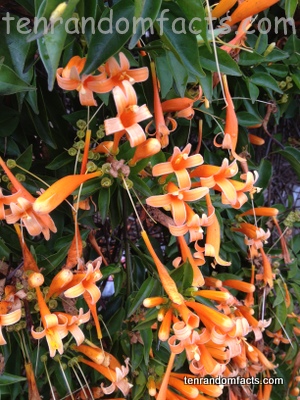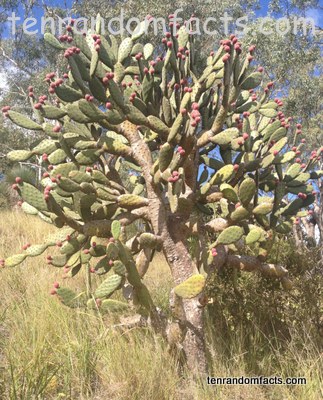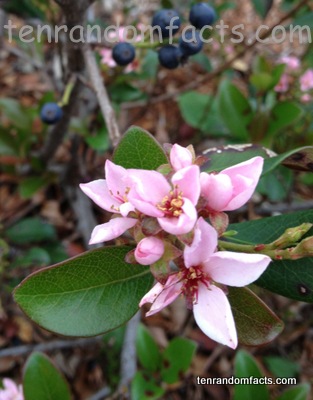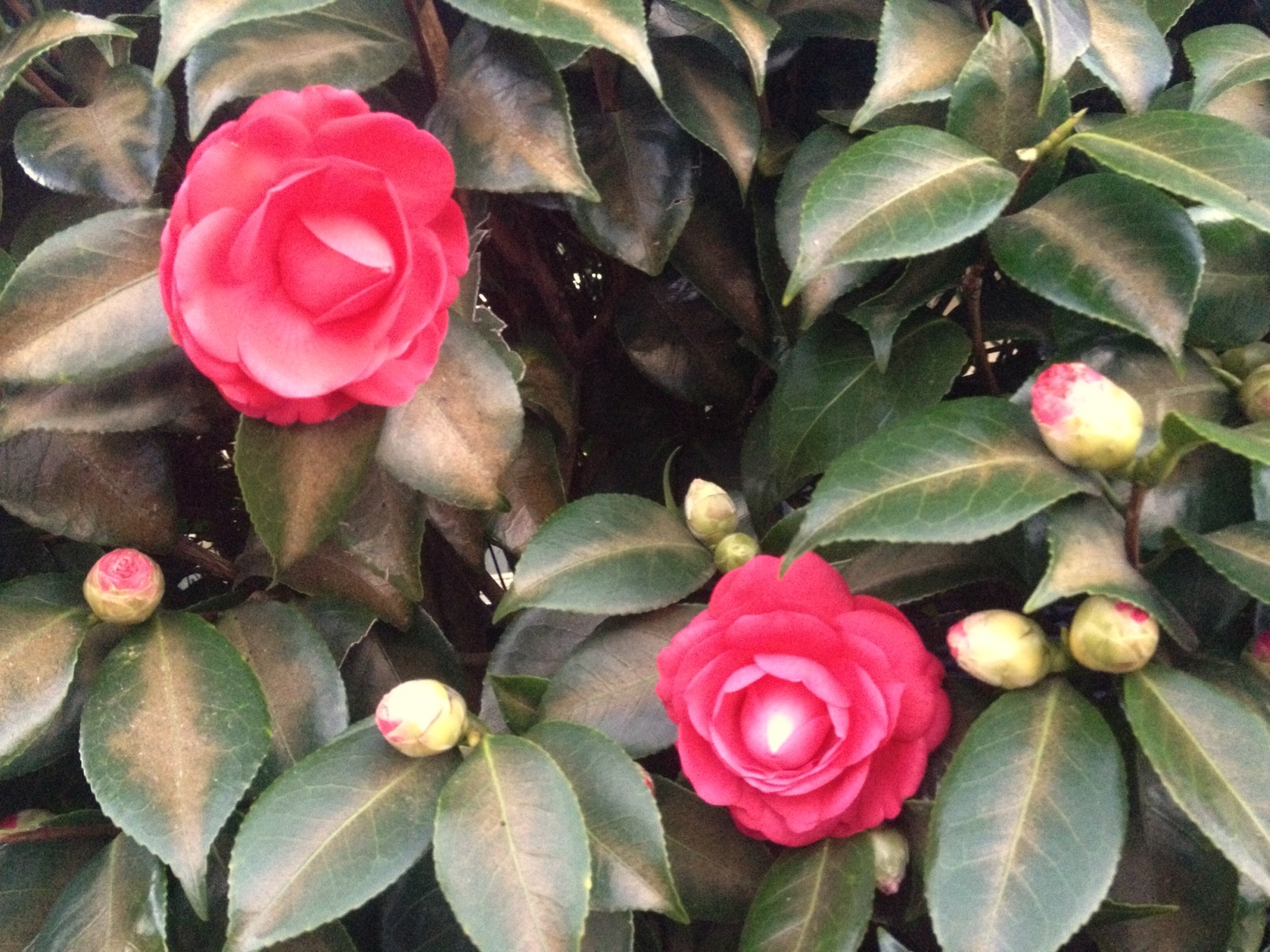
Beautiful flowers.
- Camellias are flowering small trees or shrubs that are evergreen and are from the family Theaceae, the tea family.
- Camellias are native to Eastern and Southern Asia, most notably China, Japan, Korea, India and Indonesia, and China’s native name for camellias means ‘tea flower’.
- Camellia sinensis is usually called ‘tea plant’, as it is the most common plant in the world to be used to make tea, usually from young leaves that can be made into green tea, black tea, white tea, oolong tea and other types of tea.
- Depending on the species, camellias generally grow no more than 6 metres (20 feet) in height and some species, especially sasanqua, can be grown as hedges, topiaries and espaliers.
- Camellia flowers can be white, cream, pink, red, purple, yellow or variegated, and come in a variety of forms like single, double, rose, peony and so on.
- The most popular type of camellias are sasanqua, japonica and reticulata, although their are approximately 300 species, as well as 3,000 cultivars and hybrids.
- Rain and winter frost can often damage camellia flowers, and sometimes bud drop occurs, often due to the bush producing too many buds, and this is usually nothing to be concerned about.
- Camellia flowers range in size from 1 – 13 cm (0.4 – 5 inches) and they bloom in autumn, winter and spring.
- Camellia bushes can live up to 100 to 200 years, although the oldest living camellia, planted in 1347, can be found in China’s Panlong Monastry.
- Camellias have dark, glossy leaves that can be attacked by red spider mites, which are nearly invisible to the naked eye.



